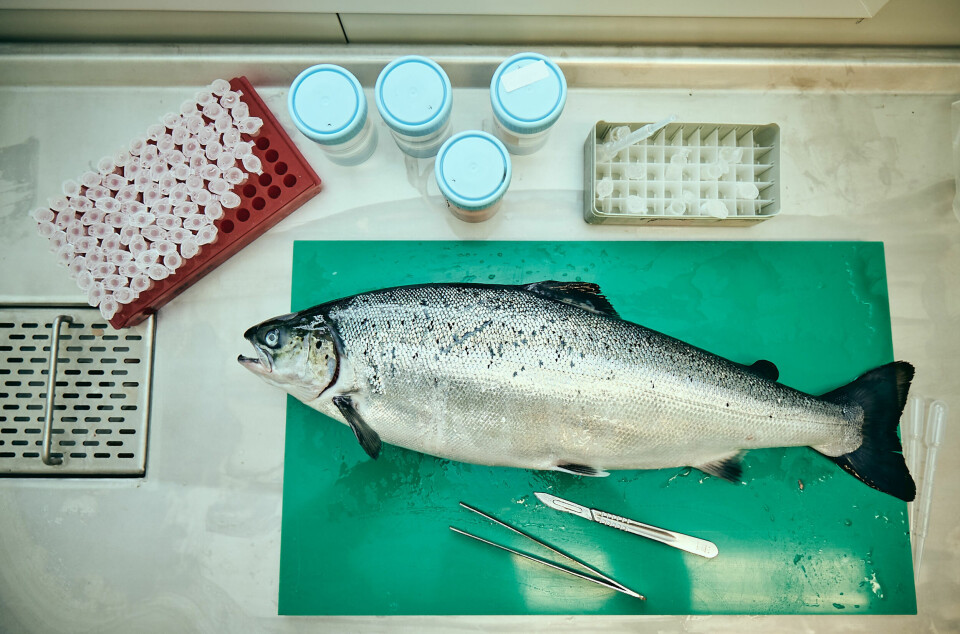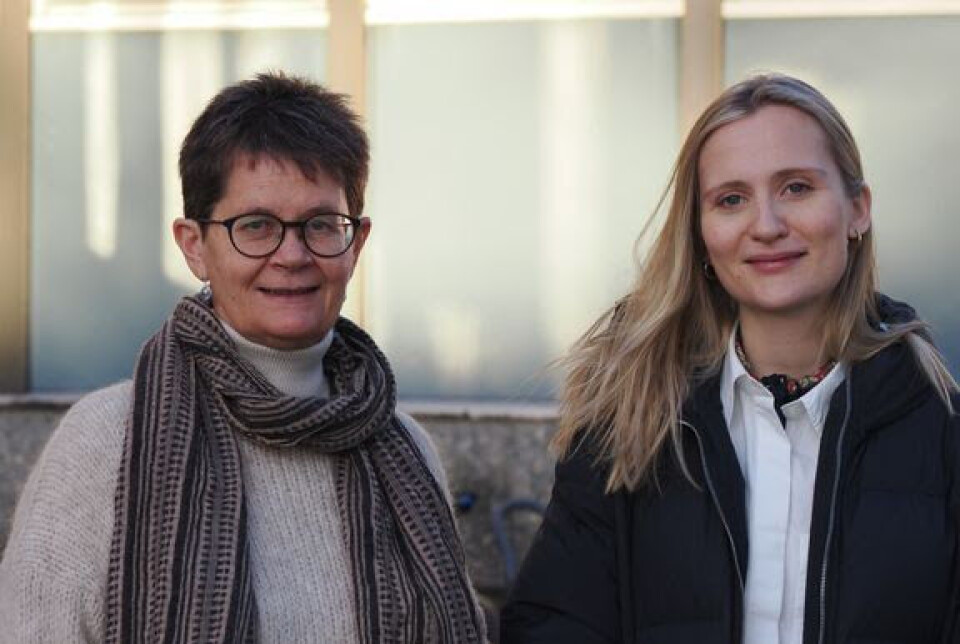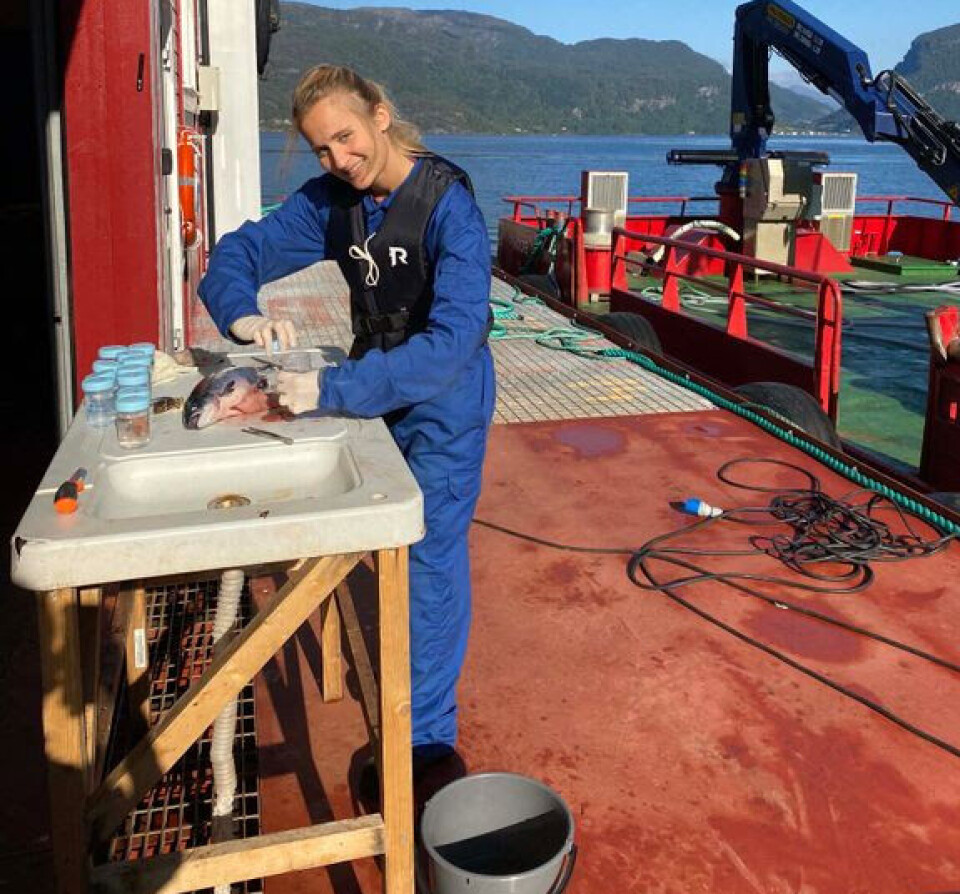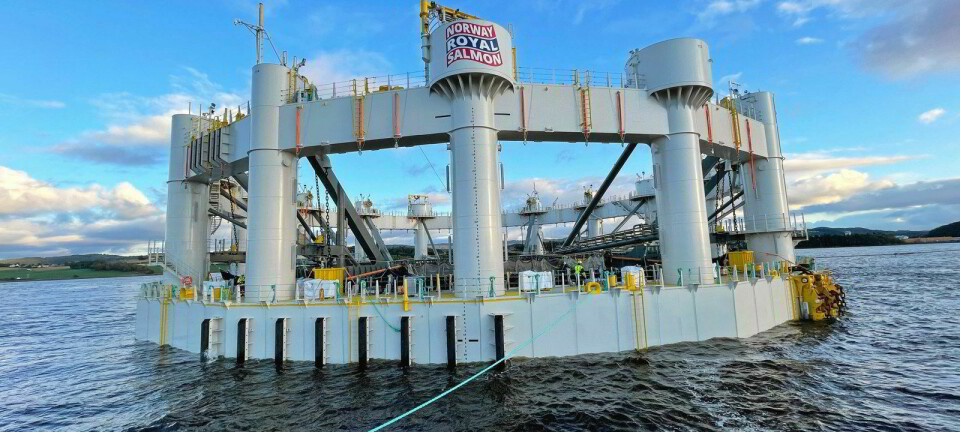
Alternative diets seen to be just as good for the fish
Field trials at salmon farmer show inclusion of black soldier flies, fermented sunflower seeds, and chicken meal don't adversly impact health or growth
Farmed salmon raised on feed containing either black soldier flies, fermented sunflower seeds, or chicken meal grow just as well as fish given traditional feed, a large-scale study shows.
Fish in field trials at Norwegian salmon and trout farmer Eide Fjordbruk were just as healthy and gained just as much weight per kilogram of feed as those on standard diets.
“What all the experiments have in common is that we found no negative effects,” said Linn Haug Eide, who is pursuing a so-called industrial PhD. This means that she is employed by the company while also conducting research at the university on a topic that the company needs to know more about – in this case, sustainable feed.
Sustainable feed sources
Margareth Øverland, a professor at the Norwegian University of Life Sciences (NMBU) and Eide’s PhD supervisor, said many things need to be solved, including finding new sources of sustainable feed, if Norway is to meet its goals of increasing salmon production.
Øverland, who is director of the NMBU-based Foods of Norway Centre for Research-based Innovation, added: “The industry is vulnerable since it is based largely on imports. Today, 92% of the feed for salmon is imported, and feed accounts for 75% or more of the total climate footprint. In the social mission that the government has launched, the goal is that all feed should be sustainable by 2034 and at least 25% of it should be produced locally here in Norway.”

Linn Haug Eide has looked at three different by-products and food waste options to use as raw materials to create the proteins that salmon need to grow and stay healthy.
One solution is black soldier flies that eat plants and food scraps that otherwise cannot be used. Eide's trials used feed with 4% and 8% insect meal.
Another is the plant by-products themselves. They contain too much fibre for the salmon to utilise the nutrients, but when the plant by-products are fermented the taste improves and the nutrients become more available. Eide fed experimental diets containing either 5% non-fermented sunflower meal (as a control diet), 5% fermented sunflower meal or 10% fermented sunflower meal. Fermented sunflower meal improved intestinal health by reducing the prevalence of prominent inflammation, and 10% inclusion promoted the relative abundance of gut lactic acid bacteria Lactiplantibacillus and Lactobacillaceae after long-term feeding.
The third new feed that Eide has tried out is chicken meal. Chicken production is increasing both in Norway and the rest of Europe. This means that there are increasingly more by-products: the parts of the chicken that humans cannot eat.
Large-scale trials
“What is special about the research we have done now is that it has been done on such a large scale. This was an area where there was a lack of knowledge. We did not know what the needs of the salmon would be under such conditions,” said Eide.
Experiments have been conducted with flies, sunflower seeds and chicken meal in the past, but they have been limited to small laboratories, NMBU said.

This time, the new feed has been tested in cages out in the fjord with up to 50,000 fish per pen, and the salmon have been fed until they are ready to be harvested.
“An important point in the research has been that we want the results to be public. A lot of feed research is done by feed companies. They want to keep what they do confidential. We hope that we can help everyone benefit from this: none of us will be selling feed raw materials,” said Eide.
European resources
Øverland said the feed industry was moving more towards using European resources, adding that large companies are investing heavily in modern technology to ferment sunflowers, soy, and corn.
Eide said that no single ingredient could replace soy, which is used widely. “That is why we need a lot of different alternatives.”
Eide Fjordbruk technical manager Erlend Eide said the company has already changed the standard diet of its fish based on the research that has been done.
“There are several reasons why we are involved in research. But we were early in measuring CO₂ footprints. We quickly saw that feed is by far the largest contributor to climate emissions from salmon,” said the manager, who is also responsible for R&D in the family-owned fish farmer.
Increased focus on feed
“Previously, research was done on soy and how it can cause infections in the intestines. Now we have focused even more on how to reduce the footprint and use more local ingredients and how it affects the fish.
“There are many things that influence where you should source feed ingredients - politics, war, and the fact that it should be a short journey.”
Erland Eide added that only a very small proportion of the feed today is local.
“Therefore, more research is required to find local raw materials and increase that proportion,” he said.
Linn Haug Eide will defend her doctoral thesis, "Alternative Protein Sources for Farmed Atlantic Salmon Evaluated Under Commercial-Scale Field Conditions", at NMBU on January 29.






















































